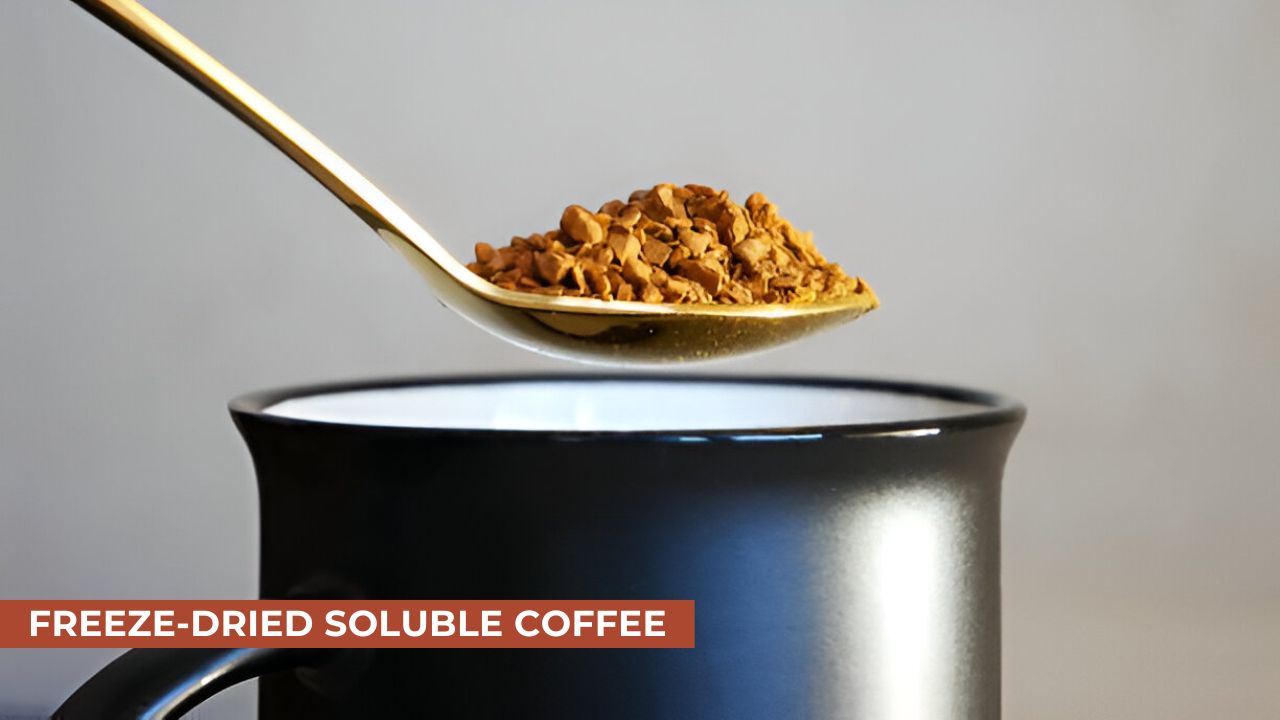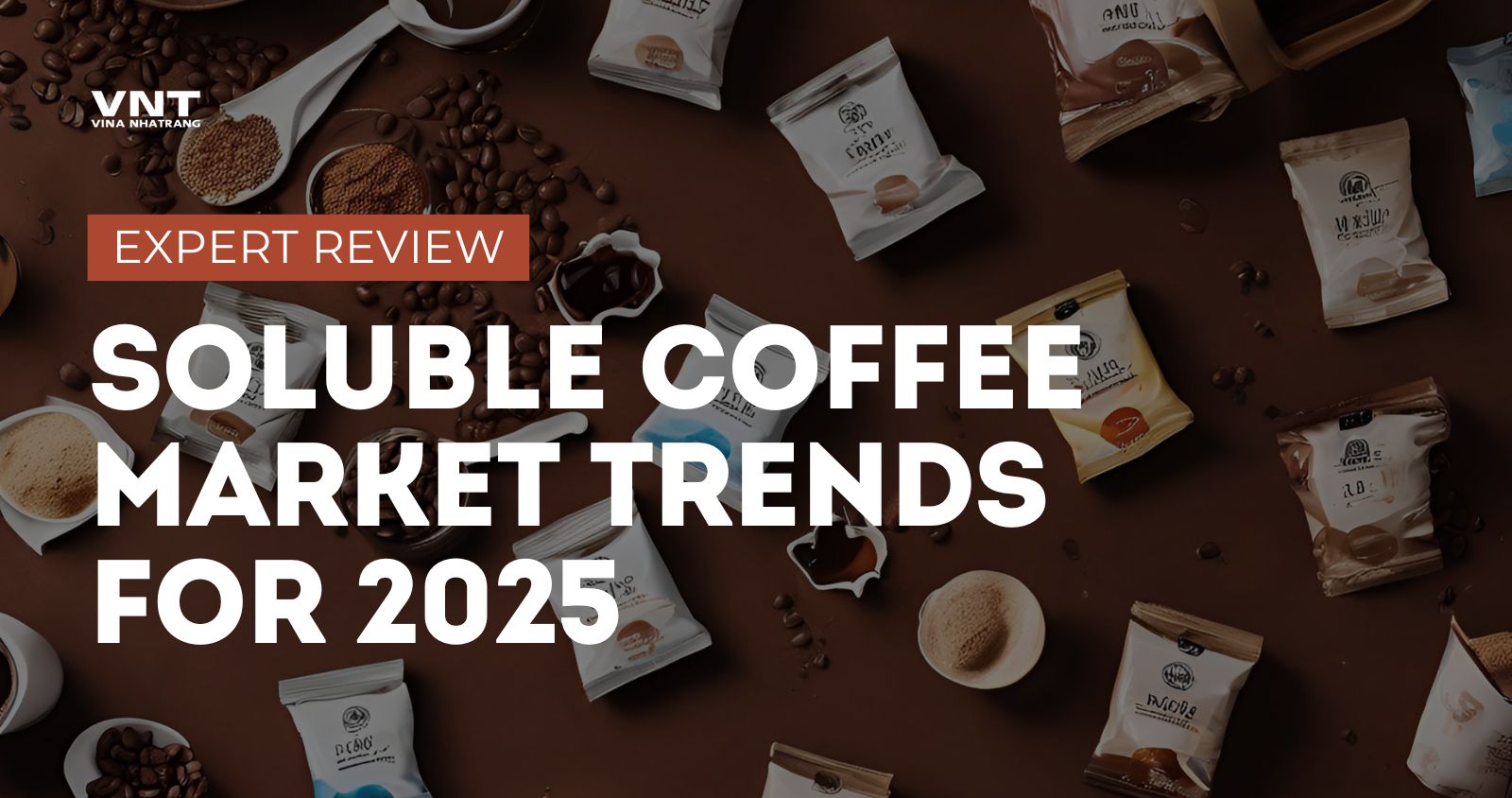Introduction
The soluble coffee market, also known as the instant coffee market, has witnessed remarkable growth over the past decade, driven by evolving consumer preferences and technological advancements. As we step into 2025, new trends are shaping the future of this dynamic industry. From the rising demand for premium instant coffee to sustainability-focused production processes, the soluble coffee market is undergoing a significant transformation. In this article, we will explore the key soluble coffee market trends for 2025 and how they will influence the global coffee industry.
Global Market Overview
What is Soluble Coffee?
Soluble coffee, commonly known as instant coffee, is created through a process of brewing coffee and then drying it into a powder or granulated form. The result is a product that dissolves quickly in hot or cold water, offering a convenient and fast way to prepare coffee without the need for brewing equipment. Unlike ground coffee, which requires brewing and filtering, soluble coffee simplifies the process, making it a preferred option for busy consumers, travelers, and workplaces.
There are two primary methods used to produce soluble coffee:
- Spray-Drying: In this method, brewed coffee is sprayed into a stream of hot air, where it dries into fine powder almost instantly. This process is cost-effective but can sometimes reduce the coffee’s flavor profile.
- Freeze-Drying: Considered a higher-quality method, freeze-drying preserves the coffee’s natural flavor and aroma. The liquid coffee is frozen into solid blocks and then shattered into smaller granules, which are dried under vacuum.
Why Consumers Choose Soluble Coffee:
- Convenience: Quick preparation makes it ideal for people with busy lifestyles.
- Long Shelf Life: Unlike fresh coffee beans or ground coffee, soluble coffee can be stored for months without losing its quality.
- Affordability: Instant coffee is often more budget-friendly than specialty coffee or single-origin whole beans.
- Portability: Soluble coffee is easy to carry and prepare on the go, making it a favorite among travelers, campers, and outdoor enthusiasts.

Current Market Size and Growth Projections
The global soluble coffee market is experiencing steady growth, driven by rising demand for convenient coffee options and the expansion of coffee culture worldwide. The market was valued at approximately $45 billion in 2022 and is projected to grow at a compound annual growth rate (CAGR) of around 5% from 2023 to 2025, reaching an estimated value of $55 billion by 2025.
Several factors are contributing to this growth:
1. Urbanization and Changing Lifestyles
The increasing pace of urbanization, particularly in emerging markets, has played a crucial role in driving the demand for instant coffee. Consumers in urban areas are often pressed for time and seek convenient options that don’t compromise on taste or quality. Soluble coffee offers a perfect solution for this fast-paced lifestyle.
2. Rising Disposable Income in Emerging Markets
Countries like India, China, and Brazil are seeing a surge in disposable income, leading to a shift in consumer behavior. Middle-class consumers in these regions are increasingly adopting global food and beverage trends, including the consumption of instant coffee.
- China: Though traditionally a tea-drinking nation, China has witnessed a remarkable increase in coffee consumption in recent years. The soluble coffee segment accounts for a significant share of the country’s coffee market due to its affordability and convenience.
- India: Instant coffee is the dominant form of coffee consumed in India, especially in southern regions where filter coffee has been a cultural staple. The younger generation is embracing soluble coffee due to its quick preparation and availability in various flavors.
3. The Growth of Café Culture and Coffee Consumption
The rise of coffee shop culture across major cities has influenced consumer preferences and increased awareness about different coffee types. While specialty coffee and café-style beverages are popular in urban centers, many consumers turn to soluble coffee as a more affordable alternative that can replicate the café experience at home.
4. Technological Advancements in Production
Recent innovations in freeze-drying technology have enabled manufacturers to produce instant coffee that rivals the taste and aroma of freshly brewed coffee. These advancements are attracting more consumers, especially in markets where quality has traditionally been a concern.

Key Regional Growth Drivers:
- Asia-Pacific: Expected to be the fastest-growing market due to rising demand in countries like China, India, and Indonesia. Instant coffee is increasingly popular in both urban and rural areas.
- Europe: Strong demand for premium and organic instant coffee is driving growth, particularly in Western Europe. Consumers are seeking products that combine quality with convenience.
- North America: The growing interest in cold brew and ready-to-drink (RTD) coffee formats is boosting the soluble coffee segment, especially among younger consumers and office professionals.
By 2025, the soluble coffee market will likely witness further diversification, with new products catering to health-conscious consumers and those seeking sustainable, ethically sourced options. The current growth trajectory suggests that brands focusing on innovation, quality, and sustainability will be well-positioned to thrive in this evolving market.
Key Soluble Coffee Market Trends for 2025
1. Premiumization of Instant Coffee
The concept of premiumization is redefining the soluble coffee market, with brands elevating instant coffee from a basic beverage to a gourmet experience. Historically perceived as a lower-quality alternative to freshly brewed coffee, instant coffee is now gaining popularity among coffee aficionados who seek convenience without compromising on quality. This shift is fueled by the growing demand for specialty coffee products and a focus on artisanal production techniques.
What is Driving Premiumization?
- Changing Consumer Preferences: Today’s consumers are more educated about coffee origins, roasting techniques, and flavor profiles. They’re willing to pay a premium for high-quality instant coffee made from single-origin beans or specialty-grade Arabica.
- Innovative Production Techniques: Advanced freeze-drying technology is enabling manufacturers to better preserve the natural flavors and aromas of coffee, making instant coffee taste remarkably similar to freshly brewed options.
- Appealing Packaging and Branding: Premium instant coffee brands invest in attractive, eco-friendly packaging that enhances shelf appeal and positions the product as a luxury item.
Examples of Premiumization in Action
- Starbucks VIA Ready Brew: Offers high-quality micro-ground coffee blends for a café-like experience at home.
- Sudden Coffee: A startup that focuses on delivering craft-quality instant coffee with unique flavors and single-origin beans.
Impact on the Market
The premiumization trend is creating new revenue streams for coffee brands. While traditional instant coffee caters to budget-conscious consumers, premium offerings appeal to millennials and Gen Z, who are willing to explore unique coffee experiences. This trend has also led to increased competition, as both established players and startups innovate to capture this growing segment.
2. Focus on Sustainability and Ethical Sourcing
Sustainability and ethical sourcing have become non-negotiable in the coffee industry. Consumers are increasingly aware of the environmental and social impact of their purchases, prompting them to choose brands that align with their values. The soluble coffee market is responding by adopting sustainable practices at every stage—from sourcing beans to packaging.
Key Drivers of Sustainability in Coffee Production
- Environmental Concerns: Climate change, deforestation, and water scarcity are significant challenges in coffee-growing regions. Brands are adopting environmentally friendly practices to reduce their carbon footprint and ensure long-term coffee availability.
- Consumer Awareness: Modern consumers demand transparency. They want to know where their coffee comes from and whether it was ethically sourced and produced without harming the environment.
Sustainability Strategies
- Recyclable and Compostable Packaging: Many companies are replacing traditional plastic packaging with eco-friendly materials like biodegradable pouches and reusable glass containers.
- Ethical Sourcing Partnerships: Collaborating with fair-trade and Rainforest Alliance-certified coffee farmers ensures that growers receive fair compensation while promoting sustainable farming practices.
- Reducing Water and Energy Consumption: Coffee producers are investing in advanced processing technologies that minimize water usage and reduce energy consumption during production.
Real-World Examples
- Nescafé Plan: Nestlé’s initiative to support coffee farmers and improve sustainability across its supply chain. The company focuses on training farmers in climate-resilient agriculture and promoting sustainable coffee-growing practices.
- Tata Coffee’s Organic Line: Tata Coffee has launched organic and fair-trade-certified products aimed at environmentally conscious consumers.
Market Impact
Sustainability is no longer a niche concern; it is a mainstream demand. Companies that prioritize ethical practices are gaining consumer trust and loyalty, which translates to long-term growth and competitive advantage.
3. Growth in Organic and Functional Coffee
The demand for organic and functional coffee is rising, driven by a global shift toward wellness and healthier lifestyles. Health-conscious consumers are moving away from traditional instant coffee that may contain additives and preservatives, opting instead for clean-label options with natural ingredients and functional benefits.
What is Functional Coffee?
Functional coffee is enhanced with ingredients that offer specific health benefits. These can include:
- Adaptogens: Help the body adapt to stress and promote mental clarity. Examples include ashwagandha, ginseng, and rhodiola.
- Probiotics and Prebiotics: Support gut health and digestion.
- Vitamins and Minerals: Fortify the immune system and boost energy levels.
- Collagen: Known for promoting healthy skin, hair, and joints.
Why Organic Matters
Organic coffee is grown without synthetic fertilizers or pesticides, ensuring a cleaner, more natural product. Many consumers perceive organic coffee as healthier and more environmentally friendly. The organic trend aligns well with the rising demand for clean-label food and beverage products.
Examples of Functional and Organic Coffee Brands
- Four Sigmatic: Offers functional coffee blended with mushrooms like lion’s mane and chaga for cognitive and immune support.
- Bulletproof Coffee: Known for its high-fat, low-carb coffee that promotes sustained energy and mental clarity.
- Mount Hagen: A pioneer in organic instant coffee, focusing on high-quality products with minimal environmental impact.
Market Opportunities
The growing interest in wellness and functional food is expanding the soluble coffee market. Functional coffee products, once a niche category, are now becoming mainstream, with major retailers stocking them alongside traditional instant coffee. This presents a significant opportunity for companies to innovate and meet evolving consumer preferences.
4. Plant-Based Innovations in Soluble Coffee
Plant-based products are booming across the food and beverage sector, and the soluble coffee market is no exception. Consumers seeking dairy alternatives are driving demand for plant-based creamers and non-dairy instant coffee blends, which offer the same convenience as traditional instant coffee while catering to a growing number of lactose-intolerant, vegan, and health-conscious individuals.
Why Plant-Based Coffee is Trending
- Health Consciousness: Many consumers associate plant-based products with health benefits such as reduced fat and cholesterol levels.
- Environmental Concerns: Plant-based alternatives generally have a lower environmental impact compared to dairy products, appealing to eco-conscious consumers.
- Diverse Flavor Profiles: Non-dairy options like almond, oat, and coconut creamers introduce unique flavor profiles that complement the coffee experience.
Popular Plant-Based Additions in Soluble Coffee
- Oat Milk Powder Blends: Oat milk has emerged as the top dairy alternative for coffee lovers due to its creamy texture and neutral flavor.
- Coconut-Based Creamers: Adds a tropical twist while being naturally dairy-free.
- Pea Protein Fortified Coffee: Combines plant-based nutrition with instant coffee for an energy and protein boost.
Example Products
- Laird Superfood: Offers plant-based instant coffee blends with coconut milk powder and functional ingredients like turmeric and mushrooms.
- Minor Figures Instant Oat Latte: A soluble oat milk latte that caters to plant-based enthusiasts.
Market Impact
The rise of plant-based innovations is encouraging manufacturers to experiment with new product formulations and flavors, creating a more inclusive market for consumers with diverse dietary preferences. The plant-based trend is also helping brands expand their reach into the growing flexitarian market, which includes consumers who aren’t strictly vegan but actively reduce their consumption of animal products.
5. The Rise of Cold Brew Soluble Coffee
Cold brew coffee has taken the beverage world by storm over the past few years, and now, cold brew soluble coffee is entering the spotlight. While traditionally brewed hot, instant coffee brands are tapping into the cold brew trend to offer ready-to-mix cold coffee options that provide the smooth, less acidic taste associated with cold brew without the long steeping time.
Why Cold Brew is Popular
- Less Acidity, More Flavor: Cold brew is known for its smoother, less bitter taste compared to hot-brewed coffee.
- Year-Round Appeal: Unlike hot coffee, cold brew is often seen as a refreshing beverage, especially in warmer climates.
- Convenience: Soluble cold brew coffee eliminates the need for long brewing times, offering a quick solution for cold coffee lovers.
Key Product Types in the Market
- Cold Brew Instant Coffee Packets: Single-serve packets that dissolve in cold water for an on-the-go cold brew experience.
- Flavored Cold Brew Blends: Innovations include flavored cold brew instant coffee in vanilla, caramel, and mocha.
- RTD (Ready-to-Drink) Soluble Cold Brew: Some brands are combining soluble coffee with bottled cold brew concentrate to create an easy-to-mix format for consumers.
Example Brands
- Cusa Coffee: Offers instant cold brew that dissolves easily in cold water for a café-quality cold coffee experience.
- Waka Coffee: Known for its cold brew instant coffee made from 100% Arabica beans.
Future Potential
The cold brew trend is expected to continue growing, especially among younger consumers seeking new and exciting ways to enjoy coffee. Soluble cold brew products have significant potential in markets with hot climates and in regions where RTD coffee is already popular, such as Southeast Asia and North America.
6. Regional-Specific Preferences and Customization
The soluble coffee market is becoming increasingly region-specific, with brands tailoring their products to meet the unique preferences and cultural tastes of different markets. This trend is particularly evident in countries with strong traditional coffee cultures or growing demand for unique local flavors.
Examples of Regional Preferences
- Asia-Pacific: Instant coffee mixes with added flavors like matcha, ginseng, and sweetened cream are popular in countries like South Korea, China, and Japan.
- Vietnam: Vietnamese-style instant coffee with condensed milk is a favorite among locals and tourists.
- Latin America: Consumers prefer rich, bold coffee flavors, and there is a growing interest in organic and fair-trade certified products.
- Middle East and North Africa (MENA): Strong, dark coffee blends with cardamom and other spices are gaining traction.
- Europe: Northern Europe leans toward functional coffee blends with health benefits, while Southern Europe prefers traditional espresso-style instant coffee.
Customization and Personalization
Brands are offering customized coffee experiences that allow consumers to tailor their coffee to their taste. This includes:
- Flavored Add-Ins: Single-serve flavor sachets such as vanilla, hazelnut, or caramel that can be added to instant coffee.
- Adjustable Caffeine Levels: Products that offer different caffeine strengths, from decaf to extra bold, to suit individual preferences.
- Multi-Function Packs: Coffee blends that include creamers, sugar, and flavoring all in one sachet for a fully customizable experience.
7. Digital Influence and E-Commerce Growth
The rise of e-commerce and digital marketing has transformed how consumers buy and experience soluble coffee. With the growth of online shopping platforms, consumers can easily access a wider variety of products, from everyday instant coffee to niche, specialty blends.
E-Commerce Trends in Soluble Coffee
- Subscription Services: Many brands offer subscription models, allowing consumers to receive a steady supply of their favorite coffee delivered to their doorstep.
- Direct-to-Consumer (D2C) Sales: Coffee brands are increasingly selling directly to customers through their websites, bypassing traditional retail channels.
- Social Media Influence: Social media platforms like Instagram, TikTok, and YouTube have become powerful marketing tools, helping brands showcase their products and engage with a younger, tech-savvy audience.
The Role of Personalization in Digital Commerce
Brands are using data analytics and artificial intelligence (AI) to offer personalized product recommendations, targeted promotions, and loyalty programs. This approach not only enhances the consumer experience but also drives higher conversion rates and customer retention.
Innovation in Soluble Coffee Production
The soluble coffee market is evolving rapidly, with cutting-edge technologies reshaping how coffee is processed, preserved, and packaged. These advancements aim to improve the quality, sustainability, and efficiency of production, making instant coffee more appealing to modern consumers.
1. Advanced Freeze-Drying Techniques
Freeze-drying has become the gold standard for high-quality instant coffee, but recent technological innovations are taking it to the next level. New methods preserve even more of the coffee’s flavor, aroma, and natural oils, resulting in a product that rivals freshly brewed coffee.
- Micro-Ground Instant Coffee: Combines freeze-dried coffee with micro-ground particles of freshly roasted beans, offering a richer and more authentic taste experience.
- Low-Temperature Freeze-Drying: Minimizes oxidation and flavor loss, creating a more premium product.
2. Flavor Encapsulation Technology
Flavor encapsulation involves coating coffee granules with a protective layer to lock in flavor and aroma until the coffee is dissolved in water. This technique improves the freshness and consistency of instant coffee.
- Result: Coffee that tastes fresher for longer, even after prolonged storage.
3. Sustainable Production Innovations
Sustainability-focused technologies are gaining traction, helping manufacturers reduce their environmental footprint while maintaining quality.
- Water-Efficient Brewing Systems: Reduce water waste during the coffee extraction process.
- Energy-Saving Drying Equipment: Cuts down on energy consumption during production.
- Compostable Packaging Technology: Advances in plant-based materials are enabling the development of compostable and biodegradable coffee packaging.
4. Smart Manufacturing and AI
Artificial intelligence (AI) and Internet of Things (IoT) technologies are being integrated into coffee production facilities to optimize processes, reduce waste, and enhance product consistency.
- AI Quality Control: Ensures that every batch of coffee meets strict quality standards.
- Predictive Maintenance: IoT sensors help identify potential equipment failures, reducing downtime and improving overall efficiency.
Future Outlook for 2025 and Beyond
As we look ahead, the future of the soluble coffee market is full of exciting possibilities. Several factors will shape the industry’s growth, including evolving consumer preferences, global economic trends, and technological advancements. Here’s what to expect:
1. Hyper-Personalized Coffee Products
Personalization will play a critical role in the future of soluble coffee. Consumers will increasingly demand products tailored to their preferences, from flavor profiles to functional benefits. Advances in AI and data analytics will make it easier for brands to offer personalized experiences.
- Customized Coffee Packs: Consumers may soon be able to design their own instant coffee blends online, choosing everything from bean origin to flavor additives and caffeine levels.
- Health-Focused Innovations: Expect more functional coffee blends with personalized health benefits, such as energy-boosting, mood-enhancing, or immunity-boosting formulas.
2. Expansion of Ready-to-Drink (RTD) Coffee Solutions
The RTD coffee market will continue to grow, with soluble coffee playing a significant role in creating instant RTD solutions that offer both convenience and quality.
- Cold Brew RTD Options: More brands will focus on cold brew-inspired instant coffee solutions for consumers who prefer cold beverages.
- Caffeinated Health Drinks: RTD drinks combining instant coffee with superfoods, adaptogens, and plant-based ingredients will gain traction.
3. Sustainability Becomes the Norm
By 2025, sustainability will no longer be a niche concern but a baseline expectation for all coffee brands. Consumers will demand transparency at every stage of the supply chain, pushing companies to adopt even more sustainable practices.
- Regenerative Agriculture: Coffee companies may start working directly with farmers to implement regenerative agricultural practices that restore soil health and increase biodiversity.
- Carbon-Neutral Production: More brands will strive for carbon-neutral or carbon-negative production processes to meet consumer expectations and regulatory requirements.
4. Regional Growth and Market Consolidation
Emerging markets in Asia, Africa, and Latin America will continue to drive the growth of the soluble coffee industry. As the market matures, we can also expect consolidation among key players as larger companies acquire smaller, innovative startups to expand their portfolios and stay competitive.
- Asia-Pacific as a Growth Hub: With rising middle-class populations and increasing coffee culture, this region will remain the fastest-growing market for soluble coffee.
- Cross-Category Collaborations: Expect to see coffee brands partnering with companies in adjacent categories such as plant-based milk, functional foods, and wellness supplements.
5. Technology-Driven Consumer Engagement
Digital transformation will continue to influence how coffee brands engage with consumers. Social media, e-commerce, and mobile apps will remain crucial for marketing, while augmented reality (AR) and virtual reality (VR) experiences could enhance product storytelling.
- Virtual Coffee Tastings: Brands might offer virtual coffee-tasting experiences that allow consumers to learn more about different blends from the comfort of their homes.
- Blockchain for Transparency: Blockchain technology could become a standard tool for providing transparency in sourcing and production, giving consumers confidence in the quality and ethics of their purchases.
Conclusion
The soluble coffee market in 2025 is set to be more dynamic and diverse than ever before. With innovations in technology, sustainability efforts, and consumer-driven trends like premiumization and plant-based products, the industry is poised for significant growth. Companies that prioritize quality, customization, and environmental responsibility will be the ones to watch as they lead the way into this exciting new chapter for instant coffee.




